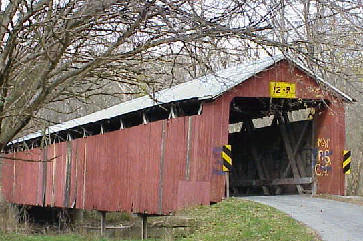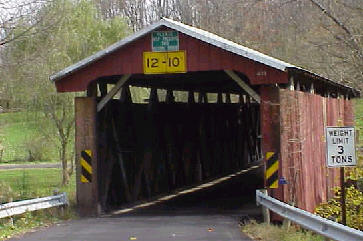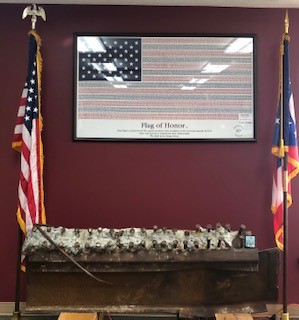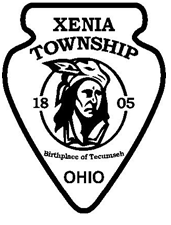XENIA TOWNSHIP
Township History
The pilgrims brought the township form of government to America in 1620. This unit of local government eventually spread as far west as the Rocky Moutains. It is found today in twenty-two states. In Ohio, the township predates our state goverment. The township’s size and shape were determined by the Congressional Acts which established the various land grants. Most of the lands defined by these acts were surveyed under the range and township system. Some of these lands were sub-divided into townships five miles square. Others were surveyed into townships that were six miles square. Within each of the Ohio land grants, Congress set aside sections of the land for the use of schools and the support of religious institutions.
As the Ohio Territory became populated, the surveyed townships became the basic unit of local government. In 1804, the elected officials of a township consisted of three trustees, a clerk, two overseers of the poor, and a sufficient number of supervisors of highways, in addition to justices of the peace and constables. A township treasurer and assessor were later added. In the early years of statehood, Ohio township government cared for the poor, maintained the roads, preserved the peace, registered brands, and generally fullfilled the needs of local government.
Today, just as in 1804, the township in Ohio is a political subdivision of the state. As such, it has only those powers granted to it by the state legislature and performs functions defined by the state. To keep pace with the demands of changing times, the functions, duties and obligations of the township have changed over the years. Demands for increased or different services have prompted the state legislature to grant Ohio’s 1,308 townships the authority to fullfill these changing demands.
Three trustees and a fiscal officer (clerk), each elected for a four-year term, administer each of our townships today. Officially, they fill their offices on a part-time basis.
Xenia Township was established August 20, 1805. (At that time it included a part of what is now Clark County). It covers 48.40 square miles. The population of the Township is 6,537 as of the 2010 Census.
Old Town appears to have been the oldest settlement in Greene Ccounty. It was a village of the Shawnee Indians, which had a peak population of 1,100 persons around 1779. The Shawnee Indians themselves destroyed the village by fire when General Clarke's forces were approaching in 1780. Its Indian name was “Chillicothe,” but it was called “Old Chillicothe” by the white settlers to distinguish it from other Indian villages of the same name. Daniel Lewis and David Monroe were the original proprietors. Moses Collier was the surveyor of the town. The plat of the town was received for record February 6, 1839, although it existed before the entry. It’s location is about three miles north of Xenia, on the Little Miami Railroad. It’s population in 1870 was two hundred. Its business enterprise was represented by one shoemaker, one distiller, one blacksmith, two wagon makers, one grocer, one dealer in flour, feed, etc. and a school.
The Wilberforce Community was once the home of the Shawnee and Ottawa Indians. It is an unincorporated village of approximately 2,380 acres. The area was named for William Wilberforce, an English
abolitionist.
Xenia Township is comprised of the following towns and villages:
- Amlin Heights, ca. 1967
- Bryson, ca. 1908
- Bucktown, ca. 1860’s
- Camp Greene, 1863
- Camp Lowe, 1861
- Deweysville
- Fairview, ca. 1855
- Frog’s Hollow, ca. 1933
- Goes Station, 1846
- King’s Station, ca. 1877
- Monroe, ca. 1908
- Oldtown, 1833 (previously called Old Chillicothe)
- Sugar Grove, ca. 1855
- Tawawa Springs, 1852-1860's (previously called Drake’s Springs, 1851)
- Wilberforce, 1856
- Xenia, 1804
Universities/Colleges in Xenia Township
Wilberforce University - the nation’s oldest private, historically black university was named to honor the great 18th century abolitionist, William Wilberforce. Early in 1856, the Methodist Episcopal Church purchased property for the new institution at Tawawa Springs, near Xenia, Ohio. The school met with early success until the Civil War when enrollment and financial support dwindled. The original Wilberforce closed its doors in 1862. In March of the following year, Bishop Daniel A. Payne of the African Methodist Episcopal Church negotiated to purchase the University’s facilities. Payne, a member of the original 1856 corporation, had cooperation from John Mitchell, principal of the Eastern District Public School of Cincinnati, Ohio, and James Shorter, pastor of the African Methodist Episcopal Church of Zanesville, Ohio. The property was soon turned over to them as agents of the church. The University was newly incorporated on July 10, 1863. In 1887 the State of Ohio began to fund the University’s sister institution, Central State University. Wilberforce University also spawned another institution, Payne Theological Seminary. Find out more about Wilberforce University
Payne Theological Seminary - its origin can be traced to the Ohio Conference of the African Methodist Episcopal Church which met in Columbus, Ohio, October 18, 1844. A committee was appointed and empowered to select a site and erect a Seminary and Manual Training School. The objective of the school, known as Union Seminary, was the “education of young men who proposed to enter the Christian ministry.” Union Seminary was located near what is now West Jefferson, Ohio. In the meantime, Wilberforce University was established in 1856 and purchased by the African Methodist Episcopal Church in 1863. Union Seminary was closed in 1858 and following this transaction the assets of the former Union Seminary were transferred to Wilberforce University. A special theological department was organized in 1866. The Board of Trustees of Wilberforce University approved the organization of a separate theological school in 1871. It was named after Bishop Daniel Payne who had interested the African Methodist Episcopal Church in a program of higher education. The Seminary was incorporated in 1894 as an independent institution. Find out more about Payne Theological Seminary
Central State University - it began in 1887 as a state-funded department of Wilberforce University. The objectives of the new department were to provide teacher training and vocational education and to stabilize these programs by assuring a financial base similar to that of other state-supported institutions. This department operated as part of Wliberforce University in most respects, however a separate board of trustees was appointed to govern the state-financed operations. In 1941, the department expanded from a two- to a four-year program, and in 1947, it legally split from Wilberforce becoming the College of Educatioin and Industrial Arts at Wilberforce. The name was changed in 1951 to Cantral State College, and in 1965, the institution achieved university status. Find out more about Central State University
COVERED BRIDGES IN XENIA TOWNSHIP

Charleton Mill Rd.
(over Massie Creek, a Howe truss bridge with 120'
clear span and 16' roadway, built in 1883)

Stevenson Rd.
(over Massie Creek; bids received in 1877
for the double, wood truss bridge)

Piece of World Trade Center arrives in Xenia Township... a 5-foot section of steel beam from the World Trade Center arrived March 29, 2011 at the Xenia Township Trustees' Office. The journey began in September 2009 when an email was answered that offered fragments of the World Trade Center to local government entities. The offer provided the Township with an opportunity to gain an artifact that freezes in time one of the most important events in United States history. The Township's request was approved and on February 9, 2011, the Township was informed that the fragment was ready to be picked up from Hangar 17 and the JFK Airport. The Township hired someone who was already picking up a fragment from the airport and it arrived safely. It now sits on display in the Xenia Township Trustees Office. There are plans in the works to provide a permanent home for the artifact by constructing a memorial. Citizens interested in participating on the memorial committee are encouraged to call the Township office at 372-0859. Members of a memorial committee could be a part of any or all of the following: fund raising, design, construction, landscaping, maintenance of the memorial, and dedication of the memorial.


|
|
|
|
|||||||||||||||||||||||||||||||||||||||||||||||||||||||||||||||||||||||
|
|
|
|
|||||||||||||||||||||||||||||||||||||||||||||||||||||||||||||||||||||||

© 2020 / All Rights Reserved